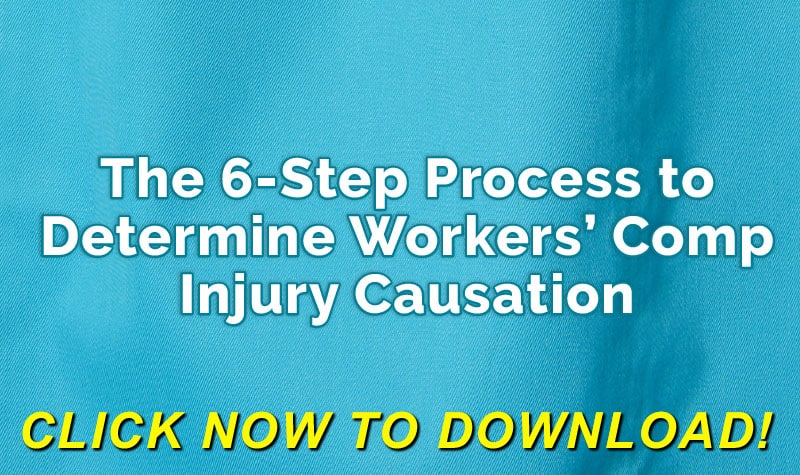
What Exactly Are Chiropractors?
Chiropractic medical care and treatment have their origins in American medical history, dating back to the mid- to late-1800s. It is a form of alternative medicine that focuses on the spine and nervous system as the source of healthy living. Unlike traditional medical doctors or “MDs,” chiropractors will receive an undergraduate degree and then abbreviated medical training. Typical courses for chiropractic include anatomy and technical training on manipulation of the spine, joints, and soft tissue.
Compensability of Chiropractic Care in Workers’ Compensation
All jurisdictions in the United States recognize chiropractic care as being compensable in a workers’ compensation system. The main question asked before medical benefits from chiropractic care are compensable is whether the treatment is “reasonable and necessary” to cure and relieve the effects of the work injury.
Click Link to Access Free PDF Download
“The 6-Step Process To Determine Workers’ Comp Injury Causation”
Challenging Chiropractic Care
From a claim management perspective, problems with chiropractic care arise when a claimant is receiving ongoing care and further recommendations for treatment only include additional chiropractic care. Applicable treatment parameters and fee schedules generally govern the evaluation of such care should be scrutinized with care and caution. Additional considerations and opportunities for objections to excessive chiropractic care are also present in the following areas:
- Lack of evidence of a reasonable treatment plan;
- No documentation of the details of the treatment;
- The degree and duration of the relief resulting from the treatment;
- Whether the frequency of treatment was warranted;
- The relationship of the treatment to the goal of returning the employee to suitable employment;
- Potential aggravation of underlying conditions by additional chiropractic treatment;
- Duration of treatment; and
- The cost of treatment in light of relief provided.
Using Discovery and Other Methods
Defending against chiropractic claims should also use the form of the employee’s deposition testimony to determine the reasonableness and necessity of chiropractic care. This evidence can also be presented to a doctor performing an independent medical examination for comment. Questioning of the injured worker replying on chiropractic care should focus on the following areas:
- Testimony from the employee about the relief they obtain from this care (the nature and extent, as well as quality of relief);
- The possibility that other conditions not discovered by the chiropractor may be causing the employee’s problem;
- Whether scheduling is on a regular basis as opposed to an as-needed basis;
- The period of relief from pain;
- The use of alternative medical providers in the event of continuing pain;
- The employee’s overall activities and the extent of the employee’s ability to continue to work;
- A recommendation of long-term chiropractic care into the future which suggests a maintenance program rather than treatment of the injury; and
- Psychological dependency of the employee on chiropractic care.
Conclusions
Chiropractic care can be effective for some injured workers. The claim management team members should be diligent regarding the overuse and reliance on this form of medical treatment for curing injuries best resolved by an M.D. Careful review of claims involving chiropractic care can reduce the cost of a workers’ compensation claim.

Contact: mstack@reduceyourworkerscomp.com.
Workers’ Comp Roundup Blog: http://blog.reduceyourworkerscomp.com/
©2023 Amaxx LLC. All rights reserved under International Copyright Law.
Do not use this information without independent verification. All state laws vary. You should consult with your insurance broker, attorney, or qualified professional.














 Making Use of Your Recorded Statement
Making Use of Your Recorded Statement
